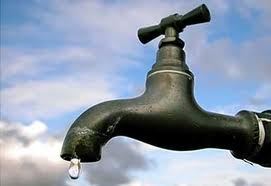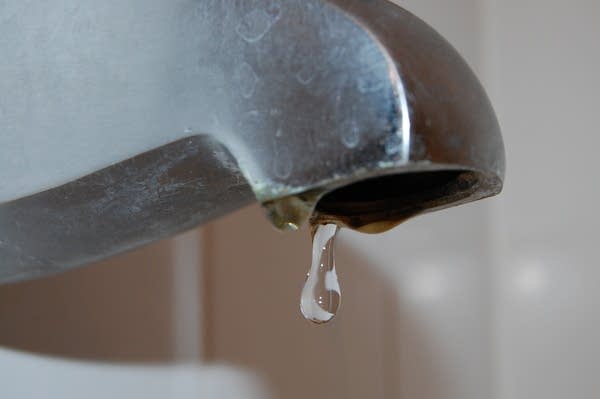Learning the Impacts of Ongoing Leaking
Learning the Impacts of Ongoing Leaking
Blog Article
We've stumbled upon the article on Health Risks Posed by Leaking Faucets below on the web and accepted it made sense to share it with you on my blog.

Introduction
A leaking tap may feel like a small annoyance, but its consequences extend much past the periodic drip. Recognizing the effects of a leaky faucet is vital for both property owners and the atmosphere. In this short article, we'll discover the different impacts of this usual home concern and why addressing it without delay is important.
Causes of Leaky Faucets
Leaking taps can result from a range of variables, including deterioration, high water stress, and corrosion. Gradually, the continuous use taps can lead to damaged seals and gaskets, triggering leakages to establish. Additionally, extreme water pressure can place strain on plumbing components, resulting in leakages. Rust and rust can additionally weaken faucet elements, making them vulnerable to leak.
Water Wastefulness
One of the most considerable repercussions of a leaky tap is water waste. Even a tiny drip can add up to gallons of drainage in time. This not only drives up water bills however also contributes to water scarcity and ecological destruction. Addressing dripping faucets without delay is essential for preserving this valuable resource and lessening its effect on the world.
Financial Impact
Along with drainage, leaking faucets can also have a substantial economic impact. Enhanced water expenses are a straight repercussion of water wastage, setting you back home owners thousands of dollars yearly. Additionally, the expense of repairing water damages caused by leaks can be substantial, particularly if left ignored for a prolonged period.
Ecological Influence
The ecological influence of dripping taps prolongs past water waste. By conserving water, property owners can contribute to broader initiatives to minimize water scarcity and safeguard natural ecosystems. Lasting options such as rainwater harvesting and water-efficient components can additionally decrease the ecological impact of home water use.
Technical Solutions
Developments in modern technology have led to the advancement of smart taps and water-saving tools that help decrease water wastage. Smart taps use sensors to identify movement and adjust water flow as necessary, decreasing waste without sacrificing comfort. Water-saving tools such as aerators and low-flow showerheads are additionally effective in preserving water without jeopardizing efficiency.
International Point of views
While leaky faucets might look like a local issue, they contribute to more comprehensive global difficulties such as water shortage and environment change. In regions already encountering water stress, every drop counts, making leakage avoidance and repair necessary. By adopting water-saving methods and purchasing sustainable innovations, property owners can play their part in attending to these pressing worldwide concerns.
Governing Actions
Government policies play an important role in reducing the influence of leaking faucets and advertising water conservation. From building codes that call for water-efficient fixtures to water-saving motivations and discounts, policymakers have a series of tools at their disposal. By applying and imposing these laws, governments can guarantee that house owners focus on water preservation in their daily lives.
Neighborhood Effect
Addressing leaking faucets needs cumulative initiatives at the neighborhood degree. By elevating awareness about the significance of water conservation and providing resources for leakage discovery and repair service, regional authorities can equip property owners to take action. Initiatives such as water-saving discount programs and leakage detection campaigns can incentivize actions adjustment and promote responsible water use.
Situation Studies
Real-life instances of the influence of leaking faucets emphasize the significance of proactive upkeep and timely fixings. From water damage to increasing water expenses, the consequences of neglecting leaks can be extreme. By sharing these case studies, home owners can much better understand the significance of dealing with leaky taps quickly.
Educational Campaigns
Educational campaigns play an essential duty in elevating understanding regarding the results of leaking faucets and advertising water conservation practices. With workshops, seminars, and on-line resources, property owners can learn exactly how to find and fix leaks themselves. By equipping people with understanding and tools, academic projects can cultivate a culture of accountable water use within neighborhoods.
Wellness Problems
Dripping taps can create favorable atmospheres for mold and mildew and mold development, posing wellness risks to owners. The visibility of mold can exacerbate respiratory concerns and allergic reactions, especially in vulnerable individuals. Additionally, water damages resulting from leakages can compromise the architectural stability of buildings and cause expensive repair work.
DIY vs. Professional Repair
When confronted with a dripping tap, homeowners commonly debate whether to attempt repair work themselves or employ an expert plumber. While DIY fixings can conserve cash, they might not constantly deal with the hidden problem effectively. Expert plumbers have the know-how and tools to detect and fix leaks correctly, making sure long-lasting options and comfort for house owners.
Safety nets
Stopping leaking faucets requires normal upkeep and positive steps. Easy tasks such as changing damaged washers and seals can prevent leakages from establishing. Furthermore, updating to premium fixtures and lowering water stress can help lengthen the life expectancy of taps and lessen the risk of leaks.
Verdict
To conclude, the results of a leaky tap extend far past the occasional drip. From water wastefulness and enhanced water bills to wellness issues and ecological influence, the repercussions of overlooking leakages can be substantial. By resolving leaking faucets immediately and embracing water-saving methods, house owners can alleviate these impacts and contribute to a more sustainable future.
Why You Shouldn’t Ignore a Leaky Faucet in Your Home
What Causes a Leaky Faucet?
Various factors can cause a leak, from loose and worn-out parts to corrosion. Your faucet has four essential components from which most plumbing issues will stem: the O-ring, the valve seat, the washer and the gasket.
What Is an O-Ring?
The O-ring is a stem screw that fastens parts of the faucet in place, preventing water from leaking out of the spout. Depending on your faucet type, the stem might have multiple O-rings. Water will drip from the faucet’s handles and base if this part breaks or deteriorates.
What Is a Valve Seat?
The valve seat controls the flow and temperature of the water. Found at the base of the handle, it works as a seal for the faucet’s stem. The valve seat ensures the water is allowed to flow or is blocked as the handles dictate. You’ll know it’s malfunctioning when water leaks from your faucet’s sides.
What Is a Gasket?
The gasket is found between the water inlet and the valve stem. It creates a seal between the faucet and the sink, holding its joints by aerators attached to the stem’s head. Water will trickle out from the base if the gasket isn’t working.
What Is a Washer?
The washer secures the handles and prevents leakage, serving a similar purpose to the O-ring. While the O-ring is ordinarily round and made from an elastic material, such as rubber, the washer is square-shaped and composed of brass, copper and other hard metals. If it malfunctions, corrodes or has been improperly installed, water will leak out of the handles, causing that incessant faucet drip.
Why Is a Leaky Faucet Dangerous?
A leaky faucet left alone for too long can have significant consequences.
Pest Infestations
Since bugs and rodents gravitate towards the scent of water, a leaky faucet will draw pests to your sink. Both are looking for leaks accessible through crawl spaces, which a faucet provides. If you leave water dripping for too long, you run the risk of an infestation.
Rust
If one of the faucet parts has started to corrode, the resulting rust can spread to your pipes and valves with startling speed. The rust might even lead to cracks or other impairments, resulting in more severe plumbing issues.
Your sink could also sustain damage from a leaky faucet. The water in your tap possesses sparse elements of calcium and iron that can stain your sink with repeated and prolonged exposure. Once those elements in the water have been open to the air for some time, your sink will start to rust, creating marks that can be difficult to remove.
https://www.tomsmechanical.com/blog/why-you-shouldnt-ignore-a-leaky-faucet-in-your-home

I found that page on How to Fix a Leaky Faucet when doing research the internet. If you enjoyed reading our blog entry plz do not forget to pass it around. Thanks for your time. Come back soon.
Report this page